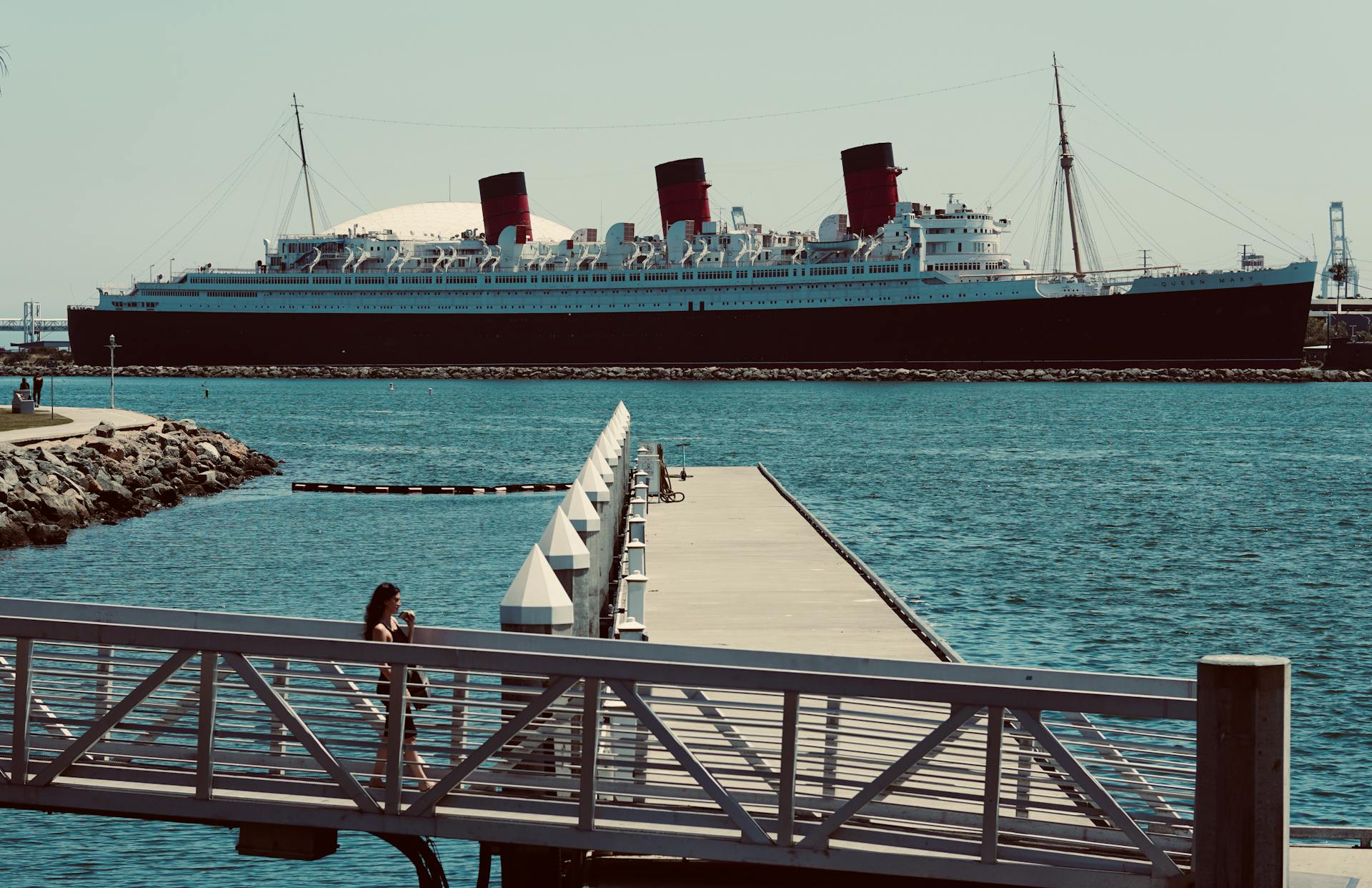
The RMS Empress of Ireland was a majestic ship that met a tragic fate. It sank on May 29, 1914, after colliding with a Norwegian collier, the SS Storstad, in the Gulf of St. Lawrence.
The ship was traveling from Quebec City to Liverpool with over 1,400 passengers and crew on board. The collision occurred in the early morning hours, and the ship sank just 14 minutes later.
The tragedy resulted in the loss of 1,012 lives, making it one of the deadliest maritime disasters in history.
The Ship
The RMS Empress of Ireland was a luxurious ocean liner built by the Canadian Pacific Railway in 1906. It was designed to be a state-of-the-art vessel, with a speed of 22 knots and a length of 601 feet.
The Empress of Ireland had a gross tonnage of 14,191 tons and was equipped with a triple-expansion steam engine. It was considered one of the most modern ships of its time, with advanced features like a swimming pool and a gym.
The ship's impressive size and luxurious amenities made it a popular choice for transatlantic travel, with a capacity for over 1,500 passengers.
Description and Construction
The Empress of Ireland was a twin screw liner designed by Francis Elgar, with a service speed of 18 knots.
She was built at Fairfield Shipbuilding and Engineering in Glasgow, Scotland, where her sister ship, the Empress of Britain, was also being constructed.
The ship's keel was laid down on April 10, 1905, and her length was 570 ft overall, with a beam of 65.7 ft and a depth of 36.7 ft.
Empress of Ireland had twin four-bladed propellers driven by quadruple-expansion steam engines, which gave her a service speed of 18 knots.
The ship's safety features included ten watertight bulkheads that divided the hull into eleven compartments, which could be sealed off through twenty-four watertight doors.
These bulkheads extended from the double bottom up to the Shelter Deck, equivalent to three decks above the waterline.
The ship was designed to remain afloat with up to two adjacent compartments open to the sea, but a fatal flaw in her design was that the watertight doors had to be closed manually.
In 1912, the ship's lifesaving equipment was updated to include sixteen steel lifeboats and twenty-six wooden collapsible lifeboats, which had a combined capacity of 1,686 people.
Captain, Crew, and Passengers

The captain of the Empress of Ireland was Henry George Kendall, a seasoned sailor with decades of experience at sea. He had a reputation for being an excellent commander, having previously captained the SS Montrose and even helped apprehend the notorious murderer Hawley Harvey Crippen.
The crew of the Empress was just as experienced, with 420 members, including 16 engineers who oversaw the engine-room. They had recently conducted an emergency drill, which they completed with perfect time.
First Officer John Edward Jones and Second Officer Roger Williams were also part of the crew. They worked closely with Chief Officer Richard Mansfield Steede, who had been serving the Empress since its maiden voyage.
Among the passengers were 167 members of the Salvation Army band, who were heading to London for a conference. The famous actor Laurence Irving and his wife Mabel Hackney were also on board, fresh from a successful North American tour.
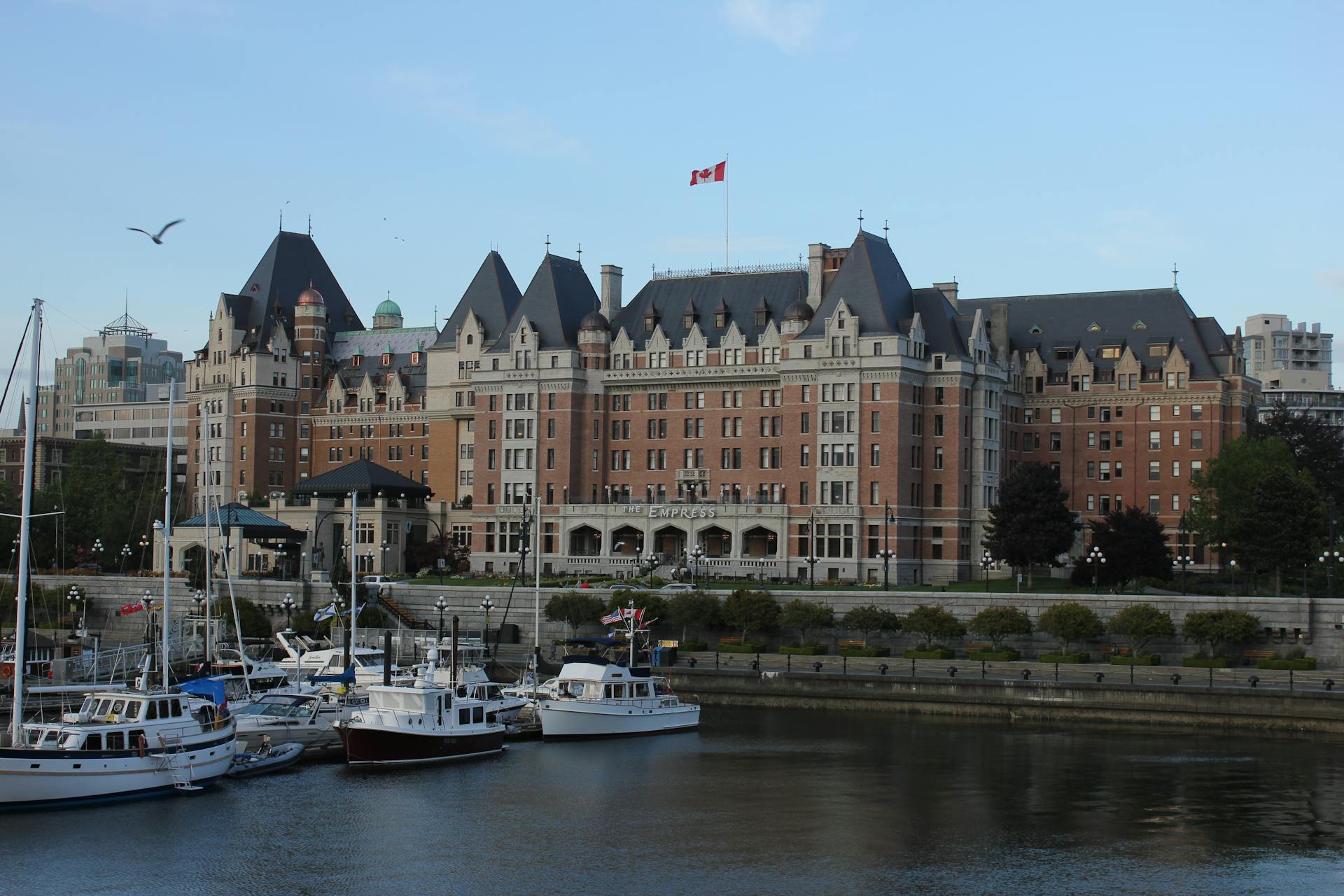
The Empress had a total of 1,057 passengers, which was a significant number considering the ship's capacity. The passengers came from diverse backgrounds, including former immigrants returning to their native countries in Europe.
The ship's third-class passengers were the largest group, with 717 people on board. This was a typical mix of steerage travelers seen on eastbound crossings, including people returning to visit relatives or re-emigrating and resettling.
The Tragedy
The Empress of Ireland's collision with the SS Storstad was a catastrophic event that occurred in the early hours of May 29, 1914. The ship's rapid listing to starboard made it impossible for passengers and crew to escape in time.
The watertight doors, a supposed safety feature, were useless in this situation as they needed to be closed manually, and there simply wasn't enough time. The portholes, which were open for the evening air, hastened the sinking of the ship as water poured in.
The ship's lights and power eventually failed, plunging the ship into darkness, and the crew was unable to respond effectively to the disaster. The Empress of Ireland sank just 14 minutes after the collision, resulting in the loss of 1,012 lives.
Collision and Sinking
On the morning of May 29, 1914, the Empress of Ireland was navigating the St. Lawrence River when it encountered a Norwegian collier, the Storstad. The two ships collided in thick fog, with the Storstad striking the Empress on its starboard side.
The impact caused a gaping hole in the Empress's hull, allowing 60,000 imperial gallons of water to pour in per second. This rapid flooding made it impossible to close the watertight doors in time.
Captain Kendall shouted to the crew of the Storstad to keep their engines at full power and plug the hole, but the Empress continued to move forward, and the current of the river shoved the Storstad away. The Storstad remained afloat, but the Empress was severely damaged.
The ship listed heavily to starboard and began to settle by the stern, with water entering through open portholes and inundating passageways and cabins. Most of the passengers and crew in the lower decks drowned quickly.
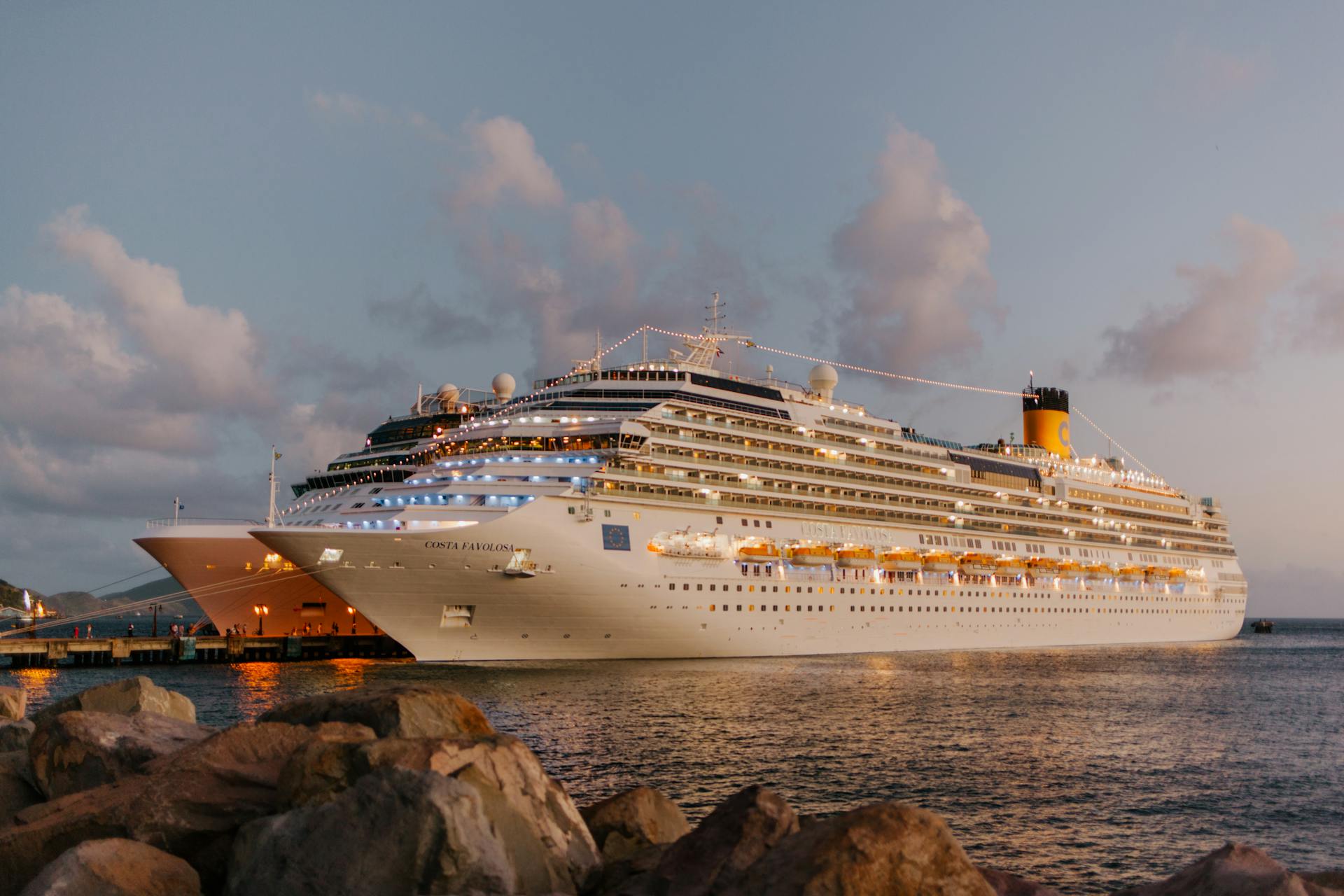
The lights and power on the Empress eventually failed, plunging the ship into darkness. Ten minutes after the collision, the ship rolled violently over its starboard side, allowing some passengers to crawl out of the portholes and decks onto its port side.
The ship lay on its side for a minute or two, and then the bow rose briefly out of the water and the ship finally sank at 02:10, 14 minutes after the collision. Hundreds of people were thrown into the near-freezing water.
Casualties and Survivors
The number of survivors was surprisingly low, with only 465 people making it out alive.
Most passengers were asleep at the time of the sinking, which contributed to the high loss of life.
The four children who survived were a remarkable exception to the rule, with only 138 children on board in total.
Among the survivors was 7-year-old Grace Hanagan, who was born in Oshawa, Ontario, and was traveling with her parents, who were both members of the Salvation Army.
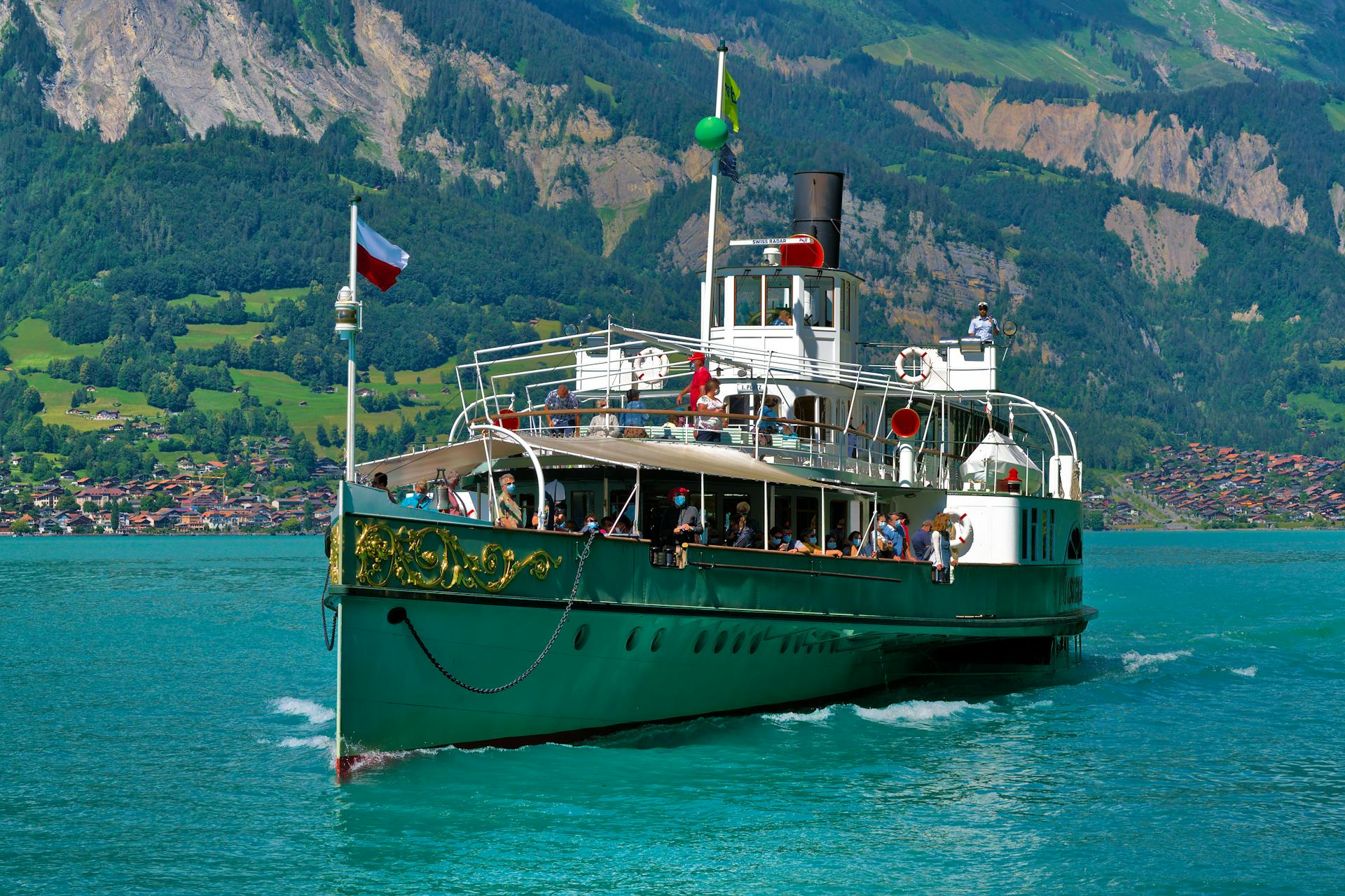
The fact that most passengers were not awakened by the collision meant that many were drowned in their cabins, with most of them coming from the starboard side where the collision happened.
The loss of life was especially tragic for the Salvation Army members, with only eight of the 170 members who were traveling to the 3rd International Salvation Army Congress in London surviving.
A total of 1,057 people were on board when the ship left its moorings at 4:27 on the afternoon of 28 May 1914.
The Aftermath
The aftermath of the RMS Empress of Ireland's sinking was a chaotic and tragic scene. 1,012 lives were lost, with only 248 crew members and 217 passengers surviving out of a total of 1,477 people on board.
Rescue efforts were quickly initiated by ships on the St. Lawrence and people on the shores, but the freezing cold waters and injuries sustained during the sinking made it a challenging task. The survivors were treated at Rimouski, where bodies were also brought for identification.
The scene at Rimouski was a grim one, with almost all the bodies bearing marks of violence inflicted by contact with the wrecked ship or in struggles in the water.
Total Saved and Lost
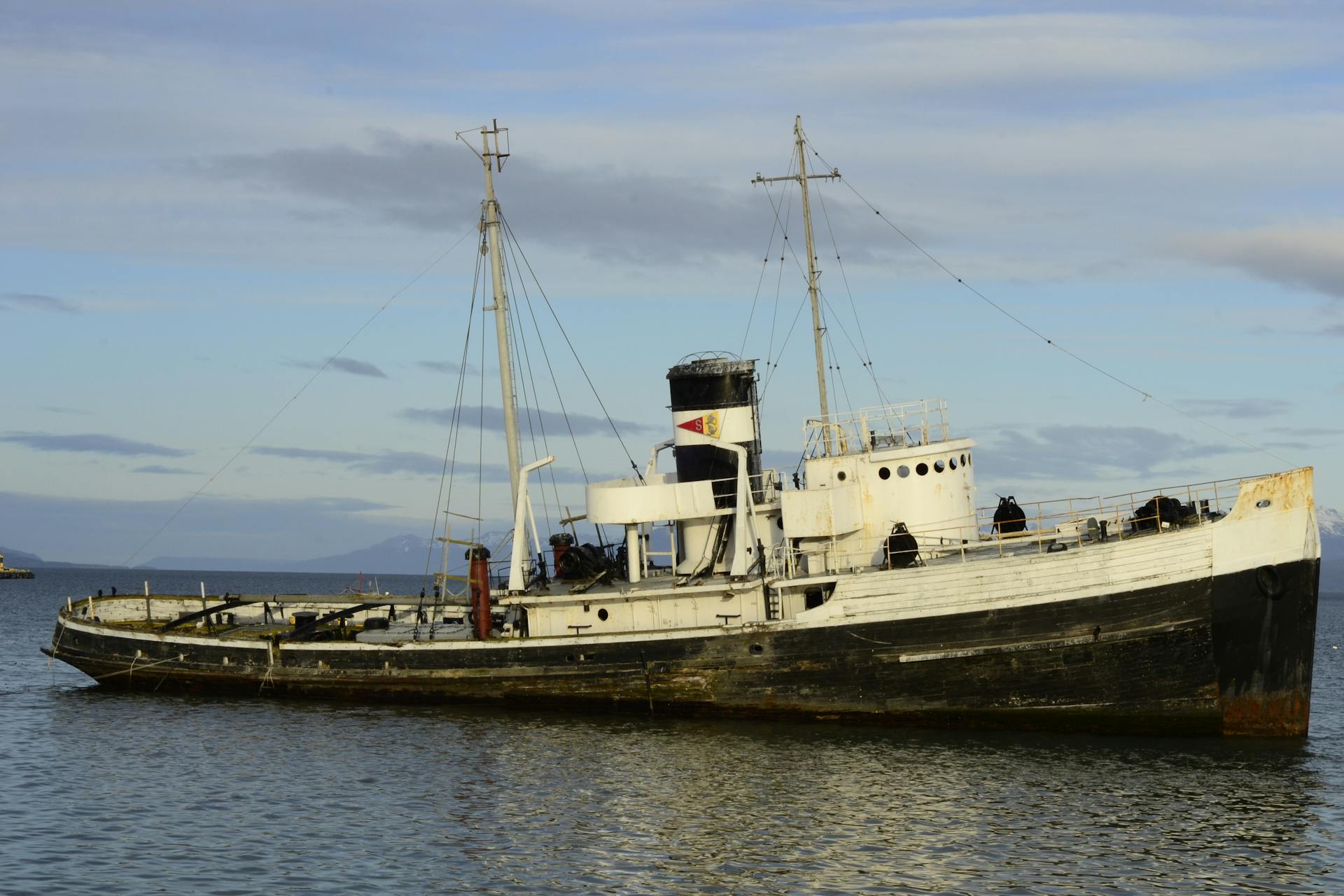
The exact numbers of passengers and crew who died or were saved from the sunken ship were not established until the inquiry due to discrepancies in the names on the manifest and the names given by survivors.
The initial reports in the newspapers were incomplete.
A total of 1,477 people were on board the ship, consisting of 420 crew members and 1,057 passengers.
The death toll was 1,012, with 840 passengers and 172 crew members losing their lives.
A total of 465 people were saved, with 248 crew members and 217 passengers surviving.
Here's a breakdown of the numbers saved and lost by group:
Rescue Operations
The rescue operations were a complex and challenging process. Emergency responders had to navigate through debris-filled streets to reach trapped survivors.
The first responders were equipped with specialized gear, including thermal imaging cameras that allowed them to locate people buried under rubble. This technology proved to be crucial in detecting signs of life.

Rescue teams worked tirelessly for days, often in hazardous conditions. They encountered numerous obstacles, including fallen power lines and unstable buildings.
In some cases, rescue dogs were used to locate survivors. These trained canines were able to detect faint sounds and scents that human responders might have missed.
The rescue efforts were a collaborative effort between local, state, and federal agencies. This coordination was essential in ensuring that resources were allocated efficiently.
Despite the challenges, rescue teams were able to save hundreds of lives. Their bravery and selflessness in the face of danger were truly inspiring.
Investigation and Inquiry
The investigation into the sinking of the RMS Empress of Ireland was a thorough one, with the Canadian government commissioning 20 questions to be answered by the inquiry. The inquiry was held on June 16, 1914, and Lord Mersey, who had presided over the Titanic and Lusitania inquiries, led the proceedings.
The captains and crew of both ships gave differing accounts of the events leading up to the collision. The captain of the Empress of Ireland claimed that he had given three short blasts on the ship's whistle to indicate that he was stopping, while the captain of the Storstad claimed that he had changed course in the fog and was not aware of the Empress of Ireland's intentions.
The inquiry ultimately found that the Storstad had changed course and was at fault for the collision. The Canadian government's inquiry also determined that there were three key factors that contributed to the rapid sinking of the Empress of Ireland: the location of the impact, the failure to close the watertight doors, and the open portholes.
Investigation
The Canadian government formulated 20 questions to be addressed in the inquiry into the loss of the Empress of Ireland. These questions were designed to get to the bottom of what went wrong.
One of the key questions was whether the Empress of Ireland was sufficiently and efficiently officered and manned. The inquiry also investigated whether the atmosphere between the two vessels became foggy or misty, and if so, whether they complied with SOLAS Articles 15 and 16.
The inquiry examined whether a good and proper lookout was kept on board both vessels. This is a critical aspect of maritime safety, and the inquiry's findings would have significant implications for the shipping industry.
Lord Mersey, who had presided over the proceedings of the Titanic Inquiry in 1912 and the Lusitania Inquiry in 1915, presided over the inquiry into the loss of the Empress of Ireland.
Salvage Operation
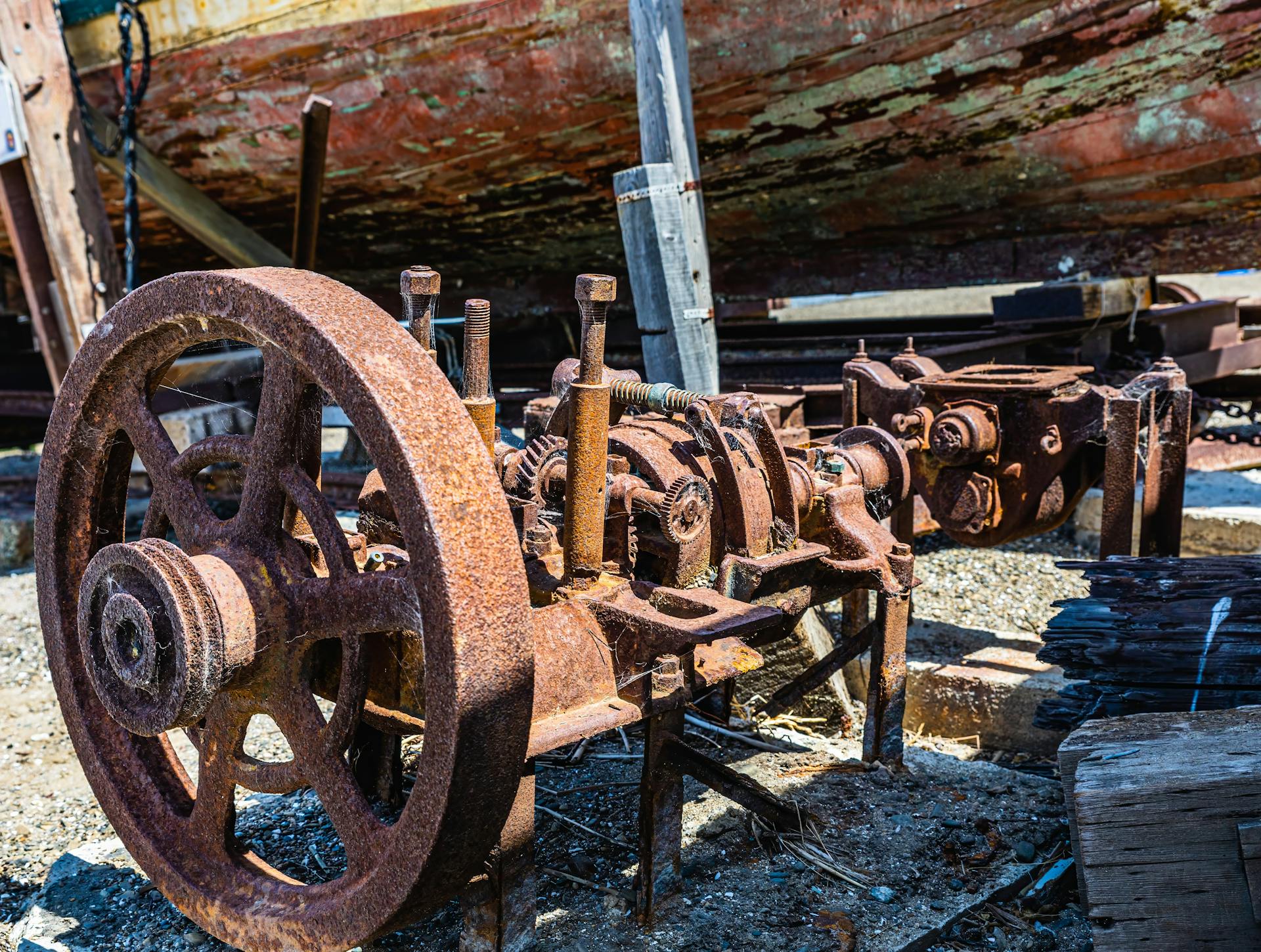
The salvage operation on the Empress of Ireland was a complex and challenging task, especially considering the wreck's location in 130 feet of water with strong currents from the Saint Lawrence River.
The salvage crew faced limited visibility, which made their job even more difficult. They were able to recover 318 bags of mail and 251 bars of silver worth about $150,000.
The operation was marked by tragedy when a hard-hat diver named Edward Cossaboom was killed while working on the wreck. He slipped from the hull and plummeted 20 meters to the riverbed below, resulting in his death.
The salvage crew was able to recover a significant amount of valuables from the ship, including the purser's safe and the mail.
The Last Voyage
The RMS Empress of Ireland's last voyage ended in tragedy, and a Canadian television film, The Last Voyage of the Empress, investigated the sinking in 2005.
The film's opinion was that the cause of the incident appeared to be the fog, exacerbated by the actions of Captain Kendall.
Captain Kendall was trying to maintain the ship's advertised speed of Atlantic crossing, which led him to make a manoeuvre to pass Storstad quickly in the fog.
Captain Anderson of Storstad saw Empress of Ireland through the fog and thought it was attempting to pass on the opposite side, so he turned his ship to starboard to avoid a collision.
However, Empress of Ireland turned to port to continue on its original time-saving heading, resulting in a bow to side collision.
Both captains failed to abide by the condition that ships should maintain their heading in fog, although Captain Anderson deviated only after seeing the deviation of Empress of Ireland.
A water tank replication of the incident indicated that Empress of Ireland could not have been stationary at the point of the collision.
The film also suggested that Captain Kendall's assertion that he gave the order to close watertight doors was probably not true, based on underwater observations of the ship's engine order telegraph in the engine room.
Memorials and Legacy
The RMS Empress of Ireland has a lasting legacy that extends beyond its tragic sinking. Memorials were erected to honor the passengers and crew who lost their lives.
One such memorial is located on the coastal road between Rimouski and Pointe-au-Père, dedicated to the memory of eighty-eight persons. The monument is inscribed with twenty names, but the identities of the remaining sixty-eight persons are unknown.
The Salvation Army also erected a monument at the Mount Pleasant Cemetery in Toronto, commemorating the lives of 167 officers and soldiers who were on board the ship. The inscription reads, "In Sacred Memory of 167 Officers and Soldiers of the Salvation Army Promoted to Glory From the Empress of Ireland at Daybreak, Friday May 29, 1914".
A memorial service is held annually at the Mount Pleasant Cemetery to honor the lives lost.
Witnesses and Accounts
The inquiry into the sinking of the RMS Empress of Ireland heard testimony from a total of sixty-one witnesses. This was a significant number, considering the complexity of the investigation.
Twenty-four crew and officers of the Empress of Ireland, including Captain Kendall, shared their accounts of the tragic event. Their testimonies provided valuable insights into the ship's operations and the circumstances surrounding the collision.
Twelve crew and officers of the Storstad, including Captain Andersen, also testified, offering their perspectives on the collision and its aftermath. Their accounts helped to piece together the events leading up to the disaster.
Five passengers of the Empress of Ireland shared their personal experiences, adding a human element to the inquiry's findings. Their stories highlighted the impact of the tragedy on those who were on board.
The inquiry also heard from twenty other people, including divers, wireless operators, naval architects, and harbour masters. Their expertise and first-hand knowledge helped to shed light on various aspects of the incident.
Witnesses
Sixty-one witnesses testified during the inquiry, providing valuable insights into the tragic events surrounding the sinking of the Empress of Ireland.

The majority of witnesses were crew and officers of the Empress of Ireland, with twenty-four individuals sharing their accounts, including Captain Kendall.
Twelve crew and officers of the Storstad also testified, including Captain Andersen, whose perspective offered a crucial insight into the collision.
Five passengers of the Empress of Ireland shared their harrowing experiences, offering a personal and emotional account of the disaster.
Twenty other witnesses, including divers, wireless operators, naval architects, and harbour masters, provided expert testimony that helped shed light on the circumstances surrounding the sinking.
Two Stories
Eyewitness accounts can be incredibly powerful in shaping our understanding of a situation. The story of a young woman who witnessed a crime in a small town is a great example of this.
She was walking home from the library when she saw a man breaking into a nearby store. The police were able to apprehend the suspect thanks in part to her testimony.
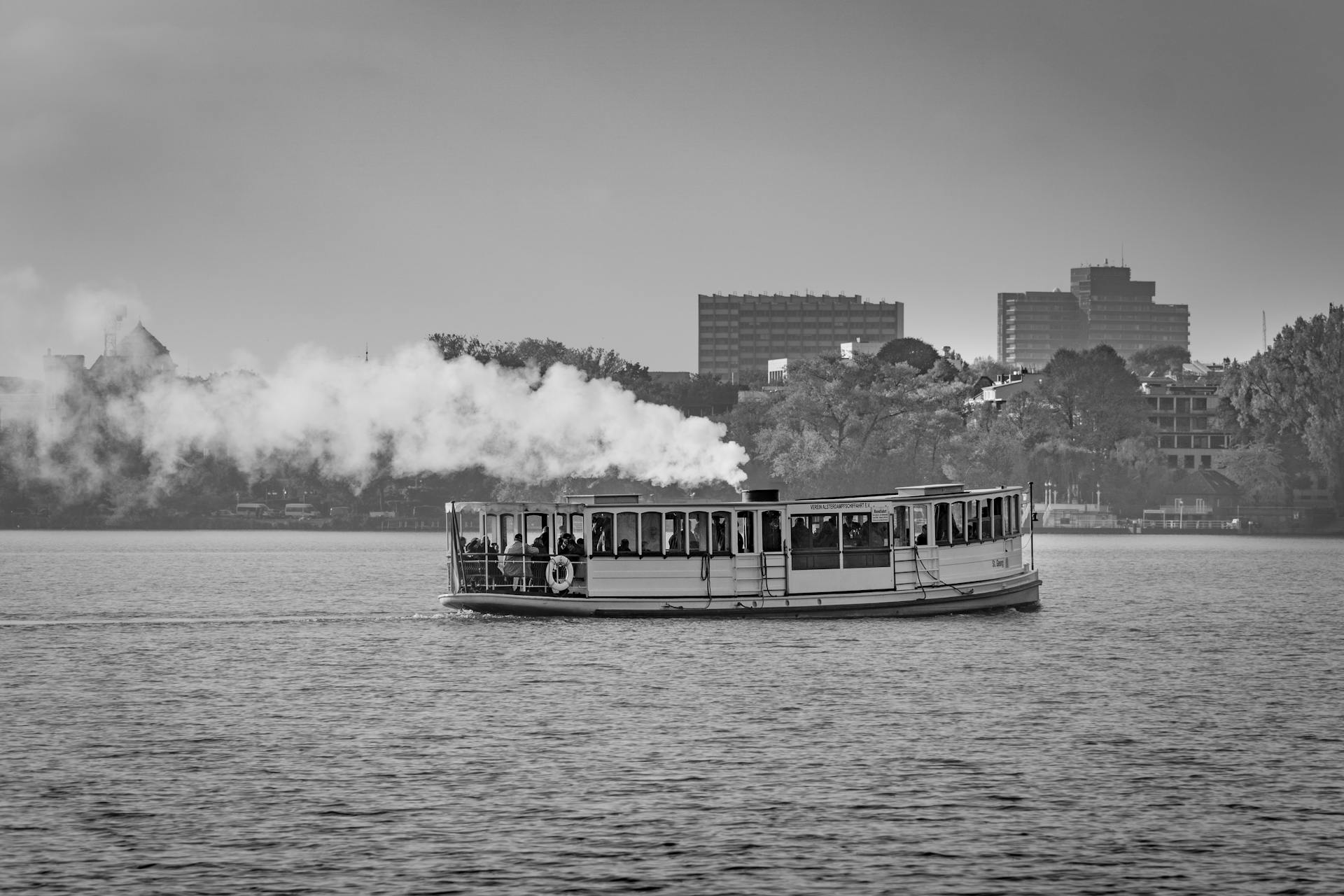
A single witness can make a huge difference in a case. The woman's account was crucial in identifying the perpetrator.
In another case, a group of hikers stumbled upon a hidden campsite in the woods. They were able to provide a detailed description of the site and its occupants to authorities.
Their testimony helped lead to the arrest of a group of poachers who had been using the site to hunt endangered animals.
The importance of witness accounts can't be overstated. They can provide valuable insight into a situation and help bring justice to those who have been wronged.
Definition and Context
The RMS Empress of Ireland was a Canadian Pacific Railway (CPR) ocean liner that operated from 1906 to 1914.
Built in Belfast, Northern Ireland, the Empress of Ireland was one of the largest ships in the world at the time.
She was designed to provide luxurious accommodations for passengers traveling between Quebec City and Liverpool, England.
Design & History
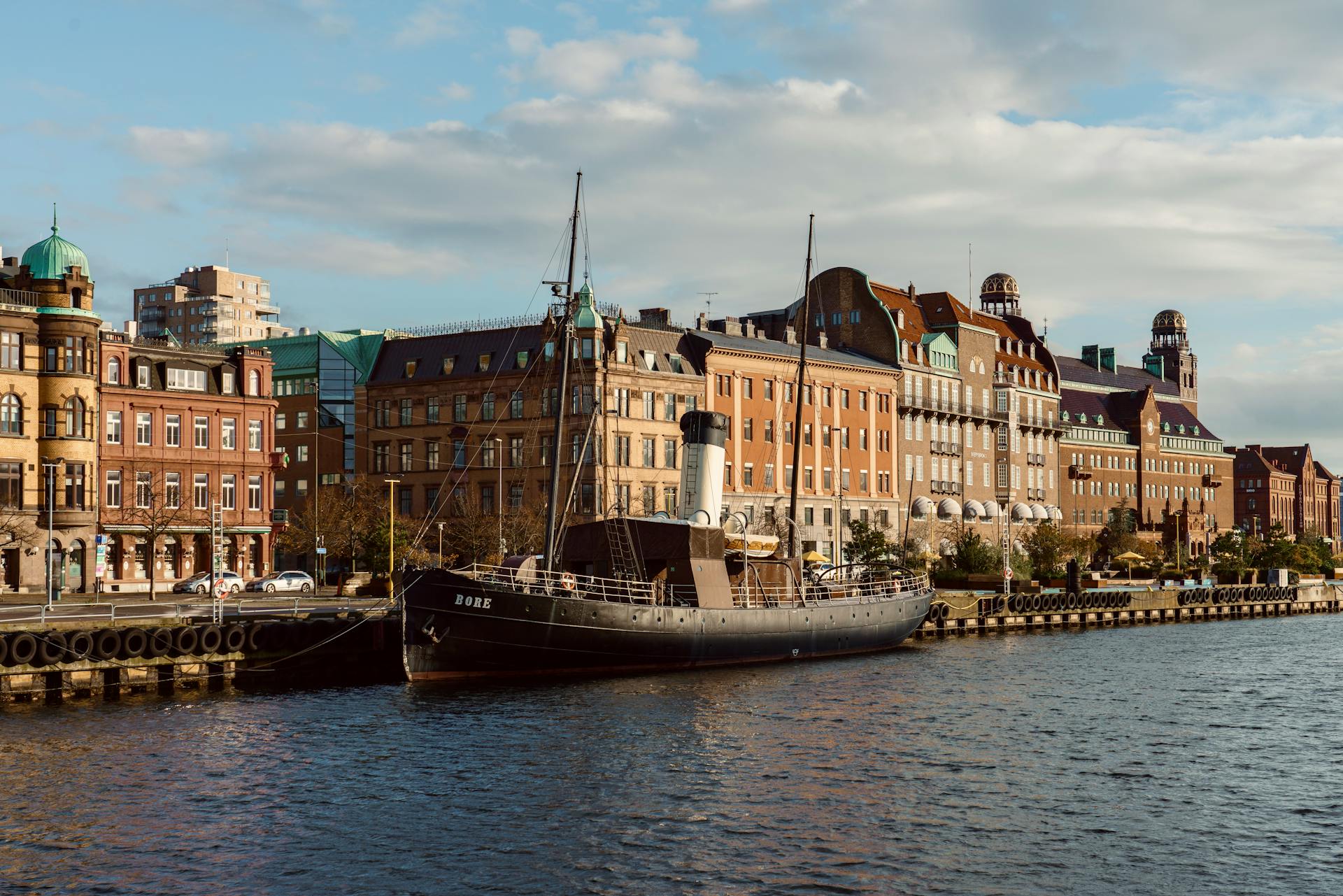
The Empress of Ireland was a twin-screw steamer built in the Clyde Yard of the Fairfield Shipbuilding Company in Glasgow, Scotland.
Both the Empress of Ireland and her sister ship, the Empress of Britain, were commissioned and owned by the Canadian Pacific Railway Company, which had entered the transatlantic travel market in 1904.
The two ships were completed in 1906 and took their maiden voyages the same year.
They were identical in design, measuring 570 feet in length, 65 feet in width, and 36.7 feet in depth.
The Empress of Ireland had twin four-blade propellers and quadruple expansion coal-burning engines that gave her a designed speed of 20 knots.
The ship could carry around 1,550 passengers, divided into three classes: First Class, Second Class, and Third Class.
A third-class passenger's ticket cost 6.50 pounds, second-class 10.00 pounds, and first-class 14.00 pounds.
The Empress of Ireland was one of the most popular ships of its day, known for its comfort, speed, and affordability.
It took the ship about six days to make the 2,800-mile crossing between Liverpool and Quebec.
Definition

The Empress of Ireland was a ship that met its demise on May 29, 1914, after being struck by the Norwegian collier Storstad.
The ship sank in under 14 minutes, a remarkably short time considering the precautions taken to ensure safety, which ultimately proved to be meaningless.
The Empress of Ireland had a starboard side gash caused by the collision, which flooded the ship and led to its swift sinking.
It's worth noting that the Empress of Ireland was fully equipped for passengers and crew to survive such an event, but unfortunately, this was not the case.
Frequently Asked Questions
Can you dive the Empress of Ireland wreck?
Yes, the Empress of Ireland wreck is accessible to advanced divers, located in 40m (130ft) of water. Divers with experience can explore this historic site.
Sources
Featured Images: pexels.com

